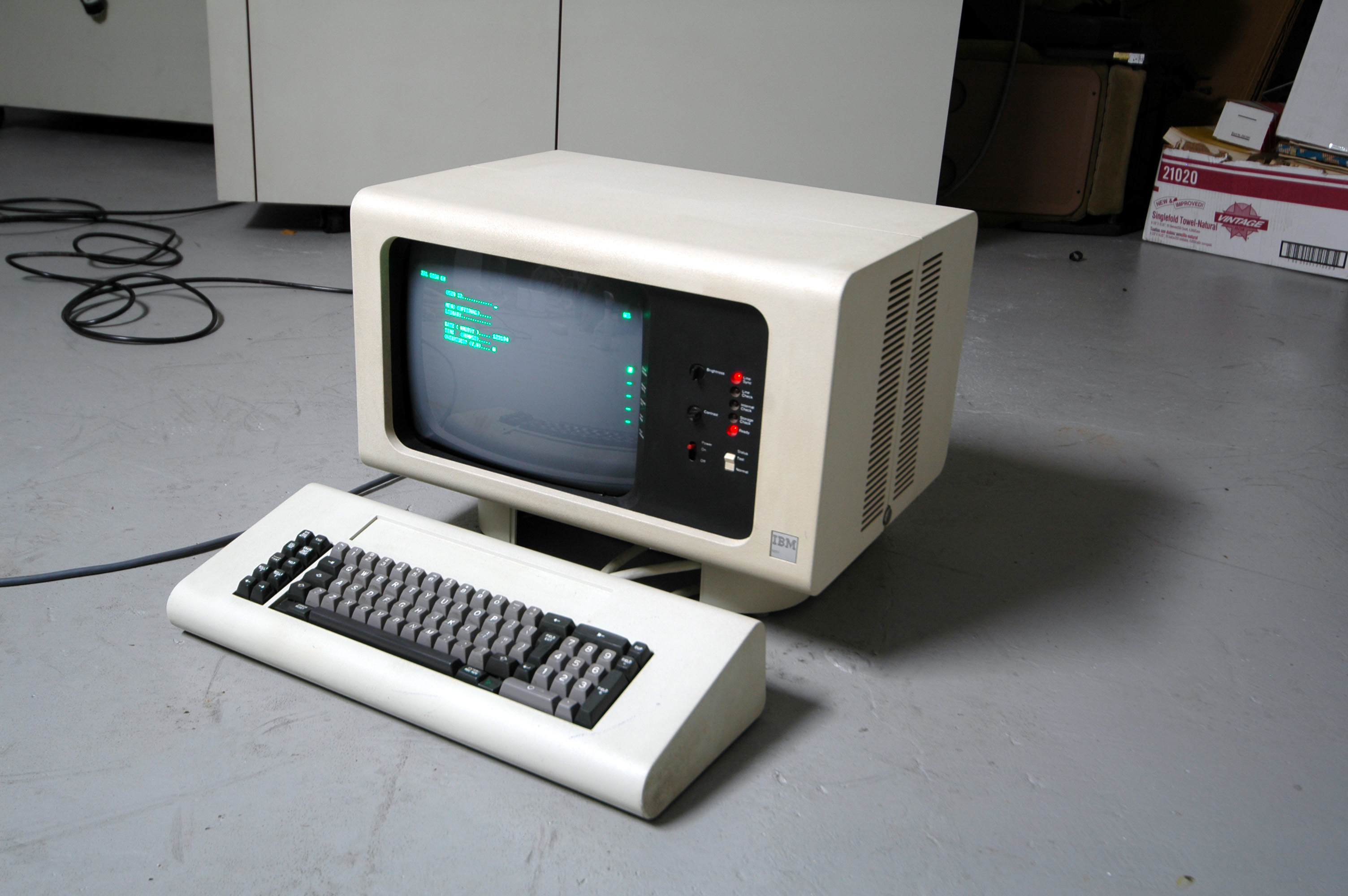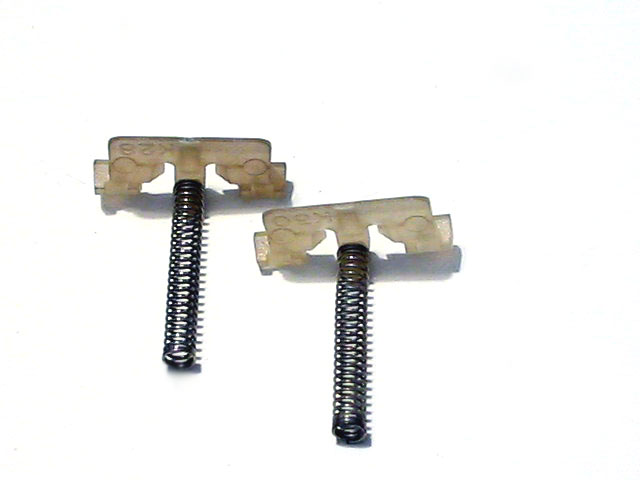Link
Original Model F
- daedalus
- Buckler Of Springs
- Location: Ireland
- Main keyboard: Model M SSK (home) HHKB Pro 2 (work)
- Main mouse: CST Lasertrack, Logitech MX Master
- Favorite switch: Buckling Spring, Beam Spring
- DT Pro Member: 0087
One of the more interesting things to pop up on Geekhack in recent times - A System/23 Datamaster keyboard posted by kps.








Link
Link
- webwit
- Wild Duck
- Location: The Netherlands
- Main keyboard: Model F62
- Favorite switch: IBM beam spring
- DT Pro Member: 0000
- Contact:
I like the built-in screen, it's just like the Logitech G15/G19.
- daedalus
- Buckler Of Springs
- Location: Ireland
- Main keyboard: Model M SSK (home) HHKB Pro 2 (work)
- Main mouse: CST Lasertrack, Logitech MX Master
- Favorite switch: Buckling Spring, Beam Spring
- DT Pro Member: 0087
I like the passthrough floppy drives. Just as long as my PC doesn't try to boot from them.
- webwit
- Wild Duck
- Location: The Netherlands
- Main keyboard: Model F62
- Favorite switch: IBM beam spring
- DT Pro Member: 0000
- Contact:
All these different numbers on the same hammers.. what does it mean?
"Click Tester" will look good on a business card.
"Click Tester" will look good on a business card.
- daedalus
- Buckler Of Springs
- Location: Ireland
- Main keyboard: Model M SSK (home) HHKB Pro 2 (work)
- Main mouse: CST Lasertrack, Logitech MX Master
- Favorite switch: Buckling Spring, Beam Spring
- DT Pro Member: 0087
5250 terminals had the Field Exit in place of the return key, with the return key pushed down lower.espritsc wrote:Woah that's quite interesting. Is the "Field Exit" key the Esc key of today?

Oldschool IBM OSes were usually form and menu driven. You'd fill in the different fields of the form, then you'd press some sort of Send or Enter button (usually to the right hand side of the spacebar) to send it to the computer.
The Datamaster probably had some form-based functionality too, thus necessitating the Field Exit, Field + and Field -.
kps postulated that they corresponded to the scancode of the key that they were used in. Knowing IBM, I would not be surprised if this was true.webwit wrote:All these different numbers on the same hammers.. what does it mean?
"Click Tester" will look good on a business card.
- webwit
- Wild Duck
- Location: The Netherlands
- Main keyboard: Model F62
- Favorite switch: IBM beam spring
- DT Pro Member: 0000
- Contact:
That does not make sense, since they are not different from key to key. Why would you want to place a spring/hammer marked 27 on one key, and an identical one marked 6 on another?
- Half-Saint
- Location: Slovenia, Europe
- Main keyboard: Raptor Gaming K1
- Main mouse: Logitech G5 Mk.2
- Favorite switch: Cherry MX Blue
- DT Pro Member: 0058
Because it's real geeky and all?
- clickykeyboards
- Location: United States of America
- Main keyboard: 1395682, IBM model M 1985
- Main mouse: Logitech G500 weighted
- Favorite switch: buckling spring
- DT Pro Member: 0233
- Contact:
..because it's IBM and the engineers labeled everything. The spring-hammer buckling spring assemblies also have individual codesThat does not make sense, since they are not different from key to key. Why would you want to place a spring/hammer marked 27 on one key, and an identical one marked 6 on another?

- webwit
- Wild Duck
- Location: The Netherlands
- Main keyboard: Model F62
- Favorite switch: IBM beam spring
- DT Pro Member: 0000
- Contact:
Yes, but, what are they individually labeling?
Isn't the point you give identical parts the same part number?
I doubt you'll find the same part numbers of spring assemblies under the same keys in each keyboard, the logistics would have been enormous, and for what?
Isn't the point you give identical parts the same part number?
I doubt you'll find the same part numbers of spring assemblies under the same keys in each keyboard, the logistics would have been enormous, and for what?
-
Pylon
- Main keyboard: Dell Latitude E6410
- Main mouse: IBM MO28UOL and E6410's Trackstick
- Favorite switch: White Alps and Scissors
- DT Pro Member: -
Has anyone noticed that different Fs had different hammer designs? My 5291-2's hammers are subtly different compared to those.
As for the markings, it's probably to track down the specific mold that made the part if some of them start to have deformations, etc.
As for the markings, it's probably to track down the specific mold that made the part if some of them start to have deformations, etc.
- daedalus
- Buckler Of Springs
- Location: Ireland
- Main keyboard: Model M SSK (home) HHKB Pro 2 (work)
- Main mouse: CST Lasertrack, Logitech MX Master
- Favorite switch: Buckling Spring, Beam Spring
- DT Pro Member: 0087
Yes. Also, there were at least two different design of barrel modules - the one in that Datamaster keyboard (and in the XT too IIRC) have the little stud underneath the barrel to ensure correct orientation. On the AT keyboard, the barrel itself is keyed with a piece of plastic attached to the barrel on the lower right hand side.
-
JBert
- Location: Belgium, land of Liberty Wafles and Freedom Fries
- Main keyboard: G80-3K with Clears
- Favorite switch: Capacitative BS
- DT Pro Member: 0049
Correct, the XT barrel has the extra stud.daedalus wrote:Yes. Also, there were at least two different design of barrel modules - the one in that Datamaster keyboard (and in the XT too IIRC) have the little stud underneath the barrel to ensure correct orientation.
Now IIRC the barrel even had some slightly altered tolerances and allowed slightly less wobble of the barrel, although that could in turn be caused by the backplate putting less pressure on the barrels. Just compare the difficulty with assembling an XT keyboard compared to the AT one.